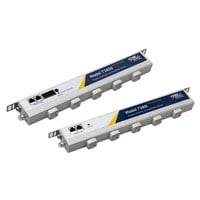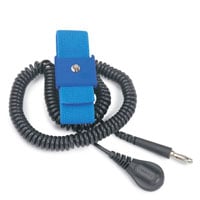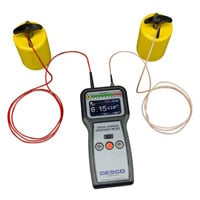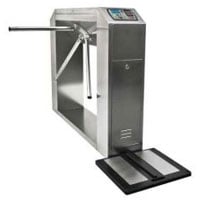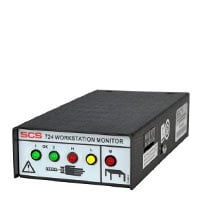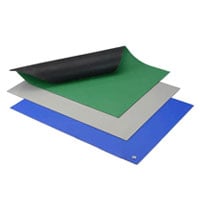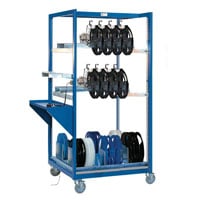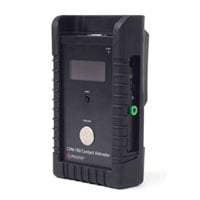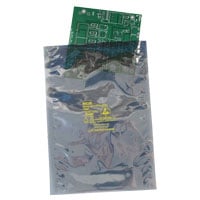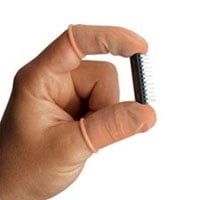ANSI/ESD S20.20 Standard & Related Documents
Electrostatic Discharge (ESD) and static electricity present costly and even dangerous risks to the electronics, medical, pharmaceutical, packaging, and many other important industries. EOS/ESD Association, Inc. has established an independent third-party certification program to meet the growing global need for technically sound ESD Control Programs. ANSI/ESD S20.20 is a multi-industry standard administered by EOS/ESD Association, Inc. through accredited ISO9000 Certification Bodies that have met the requirements of this program. The Facility Certification Program uses standard control methods and guidance to evaluate a facility's ESD program and ensure ANSI/ESD S20.20 or IEC 61340-5-1 requirements are met.
With more than 32 participating countries, over 1,900 facilities have been certified since the inception of the program. According to the factory Certification Bodies reports, the interest in Certification to ANSI/ESD S20.20 remains strong as well as a high level of inquiries for assistance. The report also shows an interest in individual education as professionals pursue their certification in ESD Control Program Managers with 158 professionals becoming successfully certified. Certification program requirements are based on Standards ANSI/ESD S20.20 and IEC 61340-5-1, with support from related standards, standard test methods, standard practices, and technical reports published by EOS/ESD Association, Inc.
ESDA Association Documents
- ANSI/ESD S20.20 (Complimentary Download)
- Synopsis of ANSI/ESD Documents
- All ESDA ANSI/ESD Complimentary PDF Downloads
- ESD Fundamentals
Definitions
ESDS stands for Electrostatic Discharge Sensitive. An electronic-sensitive device is any component that can be damaged by static charges stemming from tools, semiconductors, non-conductors, and even human users.
- ESDS Items
- Examples of electrostatic-sensitive items include microcircuits, discrete semiconductors, thick and thin film resistors, hybrid devices, printed circuit boards and piezoelectric crystals. It is possible to determine a device's susceptibility and level of sensitivity through simulated ESD events, but these might not reveal the level of sensitivity in a real-life situation. These levels of sensitivity are used to establish a baseline of susceptibility data for comparison of devices with equivalent part numbers from different manufacturers. Characterization of electronic components is identified by two different models: Human Body Model Sensitivity and Charged Device Model Sensitivity.
- Human Body Model (HBM) Sensitivity
- All devices should be considered HBM sensitive as direct transfer of an electrostatic charge from the human body is one of the most common causes of ESD damage. Human-to-device contact or even proximity can damage the components of an ESDS item. The model to simulate these events is known as HBM. Using a 100 pF capacitor, a charge is discharged through a switching component and 11500-ohm series resistor into the device being tested. If the device does not meet the datasheet parameters using parametric and functional testing, it is deemed to have failed HBM model testing.
- Charged Device Model (CDM) Sensitivity
- A charge from an ESDS item to a conductive surface at lower potential is also a common cause of ESD damage. During a CDM event, a device becomes charged and enters in contact with another conductive surface at a lower potential, resulting in a rapid discharge. This discharge event can be more damaging than the HBM for some devices. The entire CDM event can take place in less than a nanosecond, and even then, the peak current can reach several tens of amperes causing significant voltage drops and device damage.
- Machine Model Sensitivity (MM)
- The Machine Model of testing is an event where a discharge from an isolated conductor or charged conductive tool rapidly transfers energy to the conductive leads of the device. Isolated charged conductor discharges or simulations of metal-to-metal discharges are better characterized by a CDM event. MM is no longer required for device qualification as it does not give additional information that HBM and CDM events won't give already. However, understanding the control of discharges from charged conductors in a manufacturing environment is still a key element in the ESD control program.
For more information on Machine Model and device targets, see A Case for Lowering Component Level HBM-MM ESD Specifications and Requirements by the industry Council.
This copyrighted information is licensed for reproduction by EOS/ESD Association, Inc. Click here to download a complimentary copy of the full standard.Industries and Activities
The following information applies to the manufacturing industries that engage in activities that manufacture, process, assemble, install, package, label, service, test, inspect, transport, or otherwise handle electrical or electronic parts, assemblies, and equipment susceptible to damage by the following electrostatic discharges.
- Greater than or equal to 100 volts HBM
- Greater than or equal to 200 volts CDM
- Greater than or equal to 35 volts on isolated conductors
Activities that handle items vulnerable to lower voltages may require additional control elements and/or adjusted limits. Please consult EOS/ESD Association, Inc. documents for more information.
NOTE: The information mentioned below does not apply to electrically initiated explosive devices, flammable liquids, or powders.
NOTE: CDM voltage level detailed as follows is courtesy of activities recorded by EOS/ESD Association, Inc. The voltage level is based on the use of essential insulators to mitigate induced voltages on devices that could be damaged by the discharges.
NOTE: The information on isolated conductors was represented historically by MM events recorded by the ESD Association.
This copyrighted information is licensed for reproduction by EOS/ESD Association, Inc. Click here to download a complimentary copy of the full standard.Compliance for Grounding of Conductors and Non-Conductors
Grounding | Equipotential Bonding Systems
EOS/ESD Association, Inc. standards prescribe the use of Grounding / Equipotential Bonding Systems to ensure that ESDS items, users, and any other conductors that come in contact with ESDS items inside a EPA are at the same potential. Implementation processes are shown in Table 1 from ANSI/ESD S20.20-2021.
Table 1 from ANSI/ESD S20.20-2021 Grounding/Equipotential Bonding Requirements
| Technical Requirement | Implementing Process | Test Method | Required Limit(s) |
|---|---|---|---|
|
Grounding/Bonding System ©2022 Licensed for reproduction by EOS/ESD Association, Inc. |
Equipment Grounding Conductor | ANSI/ESD S6.1 | < 1.0 ohm impedance(1) |
| Auxillary Ground | ANSI/ESD S6.1 | < 25 ohms to the Equipment Grounding Conductor | |
| Equipotential Bonding | ANSI/ESD S6.1 | < 1.0 x 109 ohms(2) |
1 If there is a GFCI, this measurement is not required and may cause the GFCI to activate.
2 The maximum resistance between any ESD control items and the common connection point.
Personnel Grounding
- Wrist Straps
- While handling ESDS items, all personnel is bonded or electrically connected to the grounding/equipotential bonding system. Seated users at an ESD protective workstation must be connected to the grounding/equipotential bonding system through a wrist strap. Users on a standing workstation shall be grounded through a wrist strap or through footwear or flooring systems. The requirements for these systems and all other personnel grounding methods are shown in Table 2.
- Garments
- Garments can also be used to achieve personnel grounding. Their use should be documented in the ESD Control Program Plan. According to the ESDA document, the garment used must have electrical continuity from one sleeve to the other and meet the wrist strap resistance requirements established in Table 2 as well as the grounded static control garment system in Table 3.
Personal grounding equipment can help reduce ESD risks by establishing a ground connection to eliminate electrostatic build-up. The following are some of the most common forms of personal grounding:
Table 2 from ANSI/ESD #20/20-2021. Personnel Grounding Requirement
| Technical Requirement |
Product Qualification | Compliance Verification | ||
|---|---|---|---|---|
| Test Method(s) | Required Limit(s) | Test Method(s) | Required Limit(s) | |
| Wrist Strap System | ANSI/ESD S1.1 | System Resistance < 3.5 x 107 ohms |
ESD TR53 Wrist Strap Section | System Resistance < 3.5 x 107 ohms |
| Groundable Static Control Garment System | ANSI/ESD STM2.1 | System Resistance < 3.5 x 107 ohms |
ESD TR53 Garment Section | System Resistance < 3.5 x 107 ohms |
|
Footwear / Flooring System - (Both limits must be met)(1) ©2022 Licensed for reproduction by EOS/ESD Association, Inc. |
ANSI/ESD STM97.1 | System Resistance < 1.0 x 109 ohms |
ESD TR53 Footwear Section | System Resistance < 1.0 x 109 ohms(2) |
| ANSI/ESD STM97.2 | Peak Voltage < 100 volts |
ESD TR53 Footwear Section | Point to Ground Resistance < 1.0 x 109 ohms(2) |
|
1 A periodic body voltage generation test should be done to verify the voltage is less than 100 volts.
2 The required limit of < 1.0 x 109 ohm is the "maximum" allowed value. The user should document the resistance values that were measured for product qualification for the footwear and the flooring system to comply with the < 100 volts body voltage generation and use these resistances for compliance verification.
ESD Protected Areas (EPAs)
EPA is an area where ESDS items, parts, assemblies, and equipment can be handled without any ESD protective covering or packaging. EPA can be a single workstation, an entire isolated room, or even a building. Whatever area is designated as an EPA must have clear and identifiable boundaries. Access within those boundaries will be limited to appropriately trained ESD personnel.
NOTE: Untrained individuals can be escorted by trained personnel while in an EPA.
NOTE: Consult Table 3 from ANSI/ESD S20.20-2021 for established ESD controls within an EPA.
Compliance for ESD Protected Areas
Materials selected for use in the ESD control program shall comply with the required limits and test methods for these items shall be mandatory.
The following methods can be used to qualify the maximum resistance between any ESD control element and the common connection point. This rating will be performed during the initial selection of ESD control products and materials.
- Review of product specifications.
- Independent laboratory evaluation.
- Evaluation by an in-house laboratory
In the case of an ESD footwear system installed prior to the adoption of this standard, ongoing compliance verification records may be used as evidence of product qualification. The maximum allowable value or required limit is < 1.0 x 109 ohms. The resistance values that were measured for the qualification of footwear and flooring should be documented to compare if they meet the body voltage generation of <100 volts. These resistances will be used to verify compliance with the materials.
Table 3 from ANSI/ESD S20.20-2021. EPA ESD Control Items
| Technical Requirement |
ESD Control Item | Product Qualification | Compliance Verification | ||
|---|---|---|---|---|---|
| Test Method(s) | Required Limit(s)1 | Test Method(s) | Required Limit(s) | ||
| EPA | Worksurface(2) | ANSI/ESD STM4.1 | Point to Point < 1.0 x 109 ohms |
ESD TR53 Worksurface Section | Point to Ground < 1.0 x 109 |
Point to Groundable Point |
|||||
| Wrist Strap | ANSI/ESD S1.1 | 0.8 x 106 to 1.2 x 106 ohms |
For compliance verification of a Wrist Strap System, see Table 2. | ||
| Wristband | ANSI/ESD S1.1 | Interior 1.0 x 105 ohms |
|||
| Exterior 1.0 x 107 ohms |
|||||
| Personnel Ground Wrist Strap Connection (non-monitored) | ANSI/ESD S6.1 | Point to Ground(3) < 2 ohms |
ESD TR53 Grounding/ Equipotential Bonding Systems Section | Point to Ground(3) < 2 ohms |
|
| Continuous Monitors | User-defined | User-defined | ESD TR53 Continuous Monitors Section | Manufacturer defined | |
| Footwear | ANSI/ESD STM9.1 | Point to Groundable Point < 1.0 x 109 ohms |
For compliance verification of a Footwear/Flooring System, see Table 2. | ||
| Foot Grounders | ANSI/ESD SP9.2 | Point to Groundable Point < 1.0 x 109 ohms |
|||
| Flooring | ANSI/ESD STM7.1 | Point to Point < 1.0 x 109 ohms |
|||
| Point to Groundable Point < 1.0 x 109 ohms |
|||||
| Seating | ANSI/ESD STM12.1 | Point to Groundable Point < 1.0 x 109 ohms |
ESD TR53 Seating Section | Point to Ground < 1.0 x 109 ohms |
|
| Ionization | ANSI/ESD STM3.1 | Discharge Time User defined |
ESD TR53(4) Ionization Section | Discharge Time User defined |
|
| Offset Voltage (Peak) -35 volts < Voffset < 35 volts |
Offset Voltage (Peak) -35 volts < Voffset < 35 volts |
||||
| Shelving2 (When used to store unprotected ESDS items) |
ANSI/ESD S4.1 | Point to Point < 1.0 x 109 ohms |
ESD TR53 Worksurface Section | Point to Ground < 1.0 x 109 ohms |
|
| Point to Groundable Point < 1.0 x 109 ohms |
|||||
| Mobile Equipment2 (Working Surfaces) | ANSI/ESD S4.1 | Point to Point < 1.0 x 109 ohms |
ESD TR53 Worksurface Section | Point to Ground < 1.0 x 109 ohms |
|
| Point to Groundable Point < 1.0 x 109 ohms |
|||||
| Electrical Soldering/ Desoldering Hand Tools | ANSI/ESD S13.1 | Tip to Ground or Groundable Point < 2.0 ohms |
ESD TR53 Electrical Soldering/ Desoldering Hand Tools Section | Tip to Ground or Groundable Point < 10 ohms |
|
| Tip Voltage < 20 millivolts | |||||
| Tip Leakage < 10 milliamps | |||||
| Static Control Garment | ANSI/ESD STM2.1 | Point to Point < 1.0 x 1011 ohms |
ESD TR53 Static Control Garment Section | Point to Point < 1.0 x 1011 ohms |
|
©2022 Licensed for reproduction by EOS/ESD Association, Inc. |
Groundable Static Control Garment | ANSI/ESD STM2.1 | Point to Point and Groundable Point < 1.0 x 109 ohms |
ESD TR53 Groundable Static Control Garment Section | Point to Groundable Point < 1.0 x 109 ohms |
1 For standards that have multiple resistance test methods, these limits apply to all methods.
2 Due to a wide variety of applications for worksurfaces, specific requirements that could be broadly applied are difficult to determine. If there is a concern for CDM failures, then a lower limit of 1.0 x 106 ohms for point to point and point to groundable point should be considered.
3 If there is a resistor in line, then the time limit must be adjusted to less than 5.0 x 106 ohms.
4 For additional information on period testing of Ionizers, see ANSI/ESD SP3.3
SMT Carts
Insulators
The EPA must be cleared of all non-essential insulators, such as personal items, coffee cups, and food wrappers. To mitigate field-induced CDM events, the ESD program in use must include a plan for handling essential insulators. If the field must use an insulator greater than 2000 volts/inch while the process requires an insulator that is less than 12” from the ESDS item, then the ESDA organization stipulates that steps must be taken to either:
- Separate the required insulator from the ESDS item by a distance of greater than 30 cm (12")
- Use ionization or other charge mitigating techniques to neutralize the charge.
In case the field measured requires an insulator greater than 125 volts/inch while the process requires an insulator that is smaller than 1" from the ESDS item, then the ESDA stipulates that steps should be taken to either:
- Separate the required insulator from the ESDS item by a distance of greater than 2.5 cm (1")
- Use ionization or other charge mitigating techniques to neutralize the charge.
NOTE: The ESDA document stipulates that accurate measurements of electrostatic fields require that the user performing the measurements be familiar with the operation of the measuring equipment. For example, hand-held meters usually require readings recorded at a specific distance from the object. They also can specify that the object to measure must have a specific minimum size dimension to procure an accurate reading.
This copyrighted information is licensed for reproduction by EOS/ESD Association, Inc. Click here to download a complimentary copy of the full standard.Testing Isolated Conductors with a Voltmeter
If at the time of establishing an ESD Control Plan for your facility a conductor in contact with an ESDS item cannot be grounded or equipotential bonded, the ESDA suggests ensuring that the difference in potential between conductor and ESDS item is less than 35 volts. A non-contact electrostatic voltmeter or a high impedance contact voltmeter (see Table 3 from ANSI/ESD S20.20-2021) can be used to accomplish this part of the process.
- Worksurfaces
- Any surface on which an unprotected ESDS element is placed is a work surface. Due to their wide variety of applications, it is difficult to determine the specific requirements these surfaces must meet. If CDM events and failures could take arise from the use of worksurfaces, consider a lower limit of 1.0 x 106 ohms point-to-point and point-to-ground.
Packaging Requirements
ESD packaging requirements (both outside and inside the EPA) will be defined by the organization according to ANSI/ESD S541 or in accordance with contracts, purchase orders, or other documentation to meet customer requirements. Consult Table 4 from ANSI/ESD S20.20-2021 for packaging requirements.
NOTE: Packaging materials become working surfaces when ESDS items are placed inside them to perform work on those ESDS elements. When this happens, the packaging materials must meet the working surface requirements for ground resistance. Consult the information on periodic testing of Ionizers included in ANSI/ESD SP3.3.
Table 4 from ANSI/ESD #20/20-2021. Packaging Requirements
| Technical Requirement |
ESD Control Item | Product Qualification | Compliance Verification | ||
|---|---|---|---|---|---|
| Test Method(s) | Required Limit(s)8 | Test Method(s) | Required Limit(s) | ||
| Packaging | Conductive Packaging | ANSI/ESD STM11.11 or ANSI/ESD STM11.12 or ANSI/ESD STM11.13 | < 1.0 x 104 ohms | ESD TR53 Packaging Section | < 1.0 x 104 ohms |
| Dissipative Packaging | ANSI/ESD STM11.11 or ANSI/ESD STM11.12 or ANSI/ESD STM11.13 | ≥ 1.0 x 104 ohms to < 1.0 x 1011 ohms |
ESD TR53 Packaging Section | ≥ 1.0 x 104 ohms to < 1.0 x 1011 ohms |
|
©2022 Licensed for reproduction by EOS/ESD Association, Inc. |
Discharge Shielding (Bags Only) | ANSI/ESD STM11.31 | < 20 nJ | ESD TR53 Packaging Section | ≥ 1.0 x 104 ohms to < 1.0 x 1011 ohms |
Marking
Contracts, purchase orders, drawings and other customer documentation dictate the marking of ESDS items, as well as the marking of ESDS systems or packaging. The Organization should consider the need for marking when developing the ESD Control Program Plan and when marking is not designated by the customer. If marking is determined to be necessary, it shall be documented in the control plan.
This copyrighted information is licensed for reproduction by EOS/ESD Association, Inc. Click here to download a complimentary copy of the full standard.Additional Process Considerations
The information below outlines guidance and documentation available to help users evaluate additional control parameters for products and equipment. Since the industry has yet to define the required limits for these items, all users will need to develop their own verification criteria for acceptance and compliance.
- Automated Handling Equipment
- ANSI/ESD SPIO.I, Automated Handling Equipment (AHEI). In order to prove ESD control in automated handling equipment, the ground resistance of machine components may need to be measured and the electrostatic charge of a product as it traverses through the equipment may need to be monitored or verified. This can provide both a continuous verification of ESD countermeasures and a method for locating sources of charge generation. This standard practice addresses the resistance to ground of machine components and sources of charge on existing automated handling equipment.
- Gloves
- ANSI/ESD SP15.1 PDF, Standard Practice for In-Use Resistance Testing of Gloves and Finger Cots. This document provides test methods for evaluating gloves and finger covers' electrical resistance, in addition to their electrical resistance as well as the personnel as a complete system. This standard procedure applies to all gloves and finger guards used for ESD control. Such standard practice also provides relevant data to user-specific environments and applications.
- Conveyor Systems
- Conveyor systems carry unprotected ESD-sensitive items to move them from one station to another or through various stages of the process. Some examples include surface mount technology (SMT) lines, wave soldering machines, and reflow ovens. The most common systems are flat belts, narrow belts (often seen on SMT equipment), and roller and brush systems. While simple flat belt systems can use the same test methods as working surfaces, the other systems require different evaluation methods. At this time, there are no standards that address the different types of conveyor systems.
Table 5 from ANSI ESD S20.20-2021. ESD Susceptibility Test References for Devices
| ESD Model | ESD Standards and Methods for Susceptibility Testing of Devices |
|---|---|
| HBM | ANSI/ESDA/JEDEC JS-001 MIL-STD-883 Method 3015 MIL-STD-750 Method 1020 MIL-PRF-19500 MIL-PRF-38534 MIL-PRF-38535 |
| CDM | ANSI/ESDA/JEDEC JS-002 |
|
MM (For Information Only) ©2022 Licensed for reproduction by EOS/ESD Association, Inc. |
ESD SP5.2 |
Annex C (Informative) - Related Documents
The following documents are listed for reference. Some documents may be discontinued, however, this listing provides a further reference to the documents reviewed by the ESDA organization during the preparation of this standard.
Military I U.S. Government
- MIL-STD-3010, "Federal Test Method Standard" (Free PDF)
- MIL-PRF-81705, "Barrier Materials, Flexible, Electrostatic Free, Heat Sealable" (Free PDF)
- MIL-E-17555, "Electronic and Electrical Equipment, Accessories, and Provisioned Items (Repair Parts): Packaging of" (Free PDF)
- MIL-STD-1686, "Electrostatic Discharge Control Program for Protection of Electrical and Electronic Parts, Assemblies and Equipment (Excluding Electrically Initiated Explosive Devices)" (Free PDF)
- MIL-HDBK-263, "Electrostatic Discharge Control Handbook for Protection of Electrical and Electronic Parts, Assemblies. and Equipment (Excluding Electrically-initiated Explosive Devices)" (Free PDF)
- MIL-M-38510, "General Specification for Military Microcircuits" (Free PDF)
- MIL-P-82646, "Plastic Film, Conductive, Heat Sealable, Flexible" (Free PDF)
- MIL-PRF-87893, "Workstations, Electrostatic Discharge (ESD) Control" (Free PDF)
- MIL-STD-129, "Marking for Shipment and Storage" (Free PDF)
- MIL-STD-1285. "Marking of Electrical and Electronic Parts" (Free PDF)
- MMA-1985-79. Revision 3, "Standard Test Method for Evaluating Triboelectric Charge Generation and Decay" (Free PDF)
Industry Standards
- JESD 625, "Requirements for Handling Electrostatic-Discharge-Sensitive (ESDS) Devices" (Free PDF)
- EIA-583, "Packaging Material Standards for Moisture Sensitive Items" (Free PDF)
- TR3.O-02-05, "Selection and Acceptance of Air Ionizers"
- ESDSIL, "Reliability Analysis Center (RAC) ESD Sensitive Items List"
- ELA-471, "Symbol and Label for Electrostatic Sensitive Devices"
- IEC 61340-5-1, "Protection of Electronic Devices from Electrostatic Phenomena - General Requirements"
- VZAP, "Electrostatic Discharge Susceptibility Data" (Free PDF)
- ISO 9001, "Quality management systems - Requirements"
Additional Documentation
Additional EOS/ESD Association, Inc. Control Program Support Documents
For the latest issue, revision or amendment, visit the www.esda.org.
- ESD ADV1.0, "ESD Association's Glossary of Terms"
- ANSI/ESD S1.1, "Wrist Straps"
- ANSI/ESD STM2.1, "Garments"
- ANSI/ESD STM3.1 "Ionization"
- ANSI/ESD SP3.3, "Periodic Verification of Air Ionizers"
- ANSI/ESD STM4.1, "Worksurfaces - Resistance Measurements"
- ANSI/ESD S6.1, "Grounding"
- ANSI/ESD STM7.1-2013, "Characterization of Materials"
- ANSI/ESD STM9.1, "Footwear and Foot Grounders - Resistive Characterization"
- ANSI/ESD STM12.1, "Seating - Resistive Measurement"
- ANSI/ESD S13.1, "Electrical Soldering/Desoldering Hand Tool Test Methods for Current Leak"
- ESD TR53-01, "Compliance Verification of ESD Protective Equipment and Materials"
- ANSI/ESD STM97.1, "Floor Materials and Footwear - Resistance Measurement in Combination with a Person"
- ANSI/ESD STM97.2, "Floor Materials and Footwear - Voltage Measurement in Combination with a Person"
Additional ESD Documentation
- Recommendations For Use and Testing of ESD Protective Garments in the Electronics Industry
- ESD TR20.20 "Handbook"
How To Become an ANSI/ESD S20.20 Certified Facility
To meet the global need in the electronics industry for technically sound ESD Control Programs, EOS/ESD Association, Inc. established an independent third-party facility certification program. The program is administered by EOS/ESD Association, Inc. through country accredited ISO9000 certified bodies that have met the requirements of this program. The Facility Certification Program evaluates a facility's ESD program based on the industry standards ANSI/ESD S20.20 or IEC 61340-5-1.
Certification through an accredited third party provides assurance that standards, goods, and services meet essential requirements throughout the global supply chain – engendering consumer trust and fostering competitiveness. Increasingly, procurement authorities, government agencies, and program/scheme owners are requiring certification to demonstrate the technical competence and impartiality of conformance services and processes. These assessments enhance confidence between buyers and sellers as they mitigate risk.
For more information on becoming a certified facility, visit https://www.esda.org/certification/eosesd-association-esd-facility-certification/.



